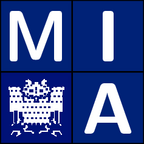
Welcome to the homepage of the lecture
Image Compression
Summer Term 2024
Home
About Us
People
Teaching
Research
Publications
Awards
Links
Contact
Internal

Image Compression
Two Computer Science Teaching Awards (Summer Terms 2017 and 2019)
For registration and more detailed information, please visit the CMS.
Lecturer:
Dr. Pascal Peter
Summer Term 2024
Lecture (4h) with exercises (2h)
Tutor: Can Wang
9 credit points
Time slots:
Monday 16-18 c.t. (self-study with video lectures)
Video lectures are available on-demand and can be watched outside of the dedicated time slot.
Wednesday 12-14 c.t. (active on-site discussion)
The discussion sessions can be attended in person or virtually, but will not be recorded.
Motivation: High resolution image data is becoming increasingly popular in research and commercial applications (e.g. entertainment, medical imaging). In addition, there is also a high demand for content distribution via the internet. Due to the resulting increase in storage and bandwith requirements, image compression is a highly relevant and very active area of research.
Teaching Goals: The course is designed as a supplement for image processing lectures, to be attended before, after or parallel to them. After the lecture, participants should understand the theoretical foundations of image compression and be familiar with a wide range of classical and contemporary compression methods.
Contents: The lecture spans the whole evolution of image compression from the dawn of information theory to recent machine-learning approaches. It is seperated into two parts:
The first half of the lecture deals with lossless image compression. We discuss the information theoretic background of so-called entropy coders (e.g. Huffman-coding, arithmetic coding, ...), talk about dictionary methods (e.g. LZW), and cover state-of-the-art approaches like PPM and PAQ. These tools are not limited to compressing image data, but also form core parts of general data compression software such as BZIP2. Knowledge about entropy coding and prediction is key for understanding the classic and contemporary lossless codecs like PNG, gif or JBIG.
The second part of the lecture is dedicated to lossy image compression techniques. We deal with classic transformation based compression (JPEG, JPEG2000), but also with emerging approaches like inpainting-based, fractal, or neural network compression. Furthermore, we consider related topics like human perception, and error measures.
For registration and more detailed information, please visit the CMS.
MIA Group
©2001-2023
The author is not
responsible for
the content of
external pages.
Imprint -
Data protection